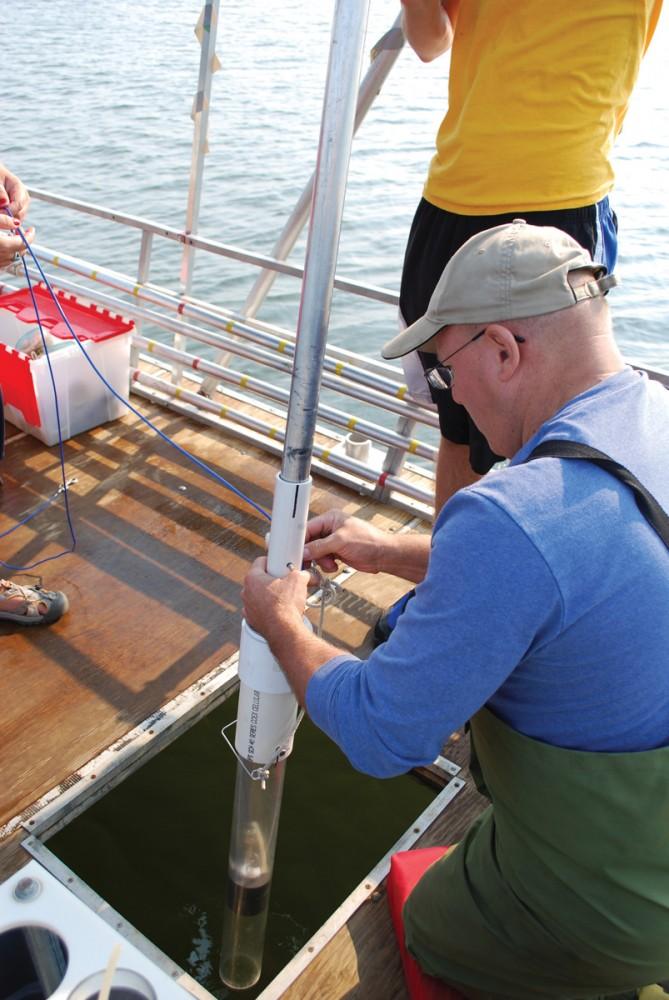AWRI receives grant to study bacteria

Courtesy / Silver Lake Improvement Board
Sep 4, 2013
The Michigan Department of Environmental Quality awarded a $32,000 grant to the Annis Water Resources Institute of Grand Valley State University to fund research on the cyanobacterium gloeotrichia in Silver Lake.
“(Gloeotrichia) is a colonial cyanobacterium—blue-green algae—that can form unsightly blooms, or surface scums, in lakes,” said Al Steinman, the principal investigator for the project and director of
AWRI. “It is an invasive species that also has the potential to form cyanotoxins and has been associated with skin irritations and/or gastrointestinal problems for swimmers who ingest a
quantity of water.”
Silver Lake is an important part of the Michigan ecosystem and is one of the many “Pure Michigan” sites in the state. It has a state park, sand dunes, 2,000 campground sites, 100 cottages, three
hotels and 800,000 annual visitors which could be affected by the gloeotrichia. Outbreaks of
gloeotrichia can result in the decline of desirable algae in the lake as well as disruption of the
natural food chain and can also release hepatotoxin microcystin-LR, which is capable of inducing
tumors if ingested in large quantities.
“While most humans know better than to consume or recreate in a huge algal scum, pets—such as
dogs—may not exhibit similar discretion, and it is estimated that several dogs die each year in
Michigan from lapping up water laced with cyanotoxins,” Steinman said.
The research funded by the grant will involve experiments to determine factors affecting the
growth of gloeotrichia, as well as its toxicity. The cyanobacterium can survive the winter by forming
spores in the sediment, which has led to outbreaks in Silver Lake the past two years. The research
will take place over the growing season from April to October through 14 bimonthly monitoring
events and a nutrient bioassay experiment, a test used to determine the strength or activity of a
substance. Field surveys and controlled experiments will also be used.
The grant was one of five awarded by the MDEQ to local universities, governments and nonprofit
organizations. The Eaton Conservation District, the Kalamazoo River Watershed Council, the Tip of
the Mitt Watershed Council and the Timberland Resource Conservation and Development
Organization also received grants, totaling $197,115.
AWRI, in conjunction with the U.S. Geological Survey, is conducting another study to determine
what puts the lake’s ecosystem under stress and hopes to create best management practices to
relieve that stress. Bill DeJong is a property owner on the lake and a member of the Silver Lake
Improvement Board, a quasi-governmental agency that consists of the township and the county
and is responsible for treatment and upkeep of the lake.
“What happens is that you have a pretty intense human impact on this lake,” DeJong said. “Whether
this problem’s coming from agriculture, upstream tributaries, human waste, ducks and geese or
whatever, we’re trying to figure out what’s really the condition of the lake from a scientific
perspective so that we can come up with a rational solution.”
For more information on AWRI, visit www.gvsu.edu/awri. For more information on Silver Lake, visit
silverlakeimprovement.com.

























